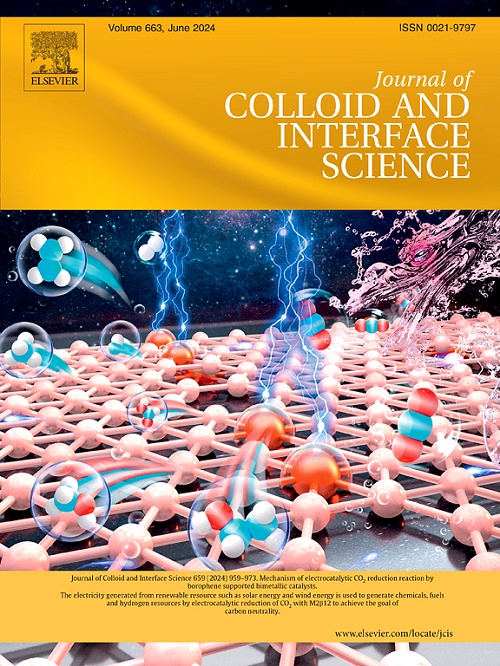Mechanically robust, creep resistant and photo-stimuli-responsive elastomer vitrimer enabled by integrating boronic ester bond and carboxyl-Fe3+ complex
IF 9.4
1区 化学
Q1 CHEMISTRY, PHYSICAL
引用次数: 0
Abstract
Vitrimers have emerged as promising materials to balance the trade-off of the covalent crosslinking and malleability. Nevertheless, vitrimers, especially those containing exchangeable bonds with low trigger temperatures, are susceptible to creep and lose dimensional stability at service temperature, which inevitably limits their application realm. Herein, toward this dilemma, metal complexes were engineered into a rubber vitrimer network to increase the fraction of restricted segment and hinder the network rearrangement below the reprocessing temperatures. Specially, commercially available SBR was first modified with mercaptopropionic acid to implant ligand onto the rubber chains, which was subsequently crosslinked by a synthesized dithiol-containing boronic ester crosslinker. In order to exclude the adverse effect to covalent crosslinking, metal ions were introduced into the rubber vitrimer networks to form carboxyl-Fe3+ complex by swelling the rubber sheets into a THF solution of Fe3+. By incorporation of 2.1 wt% of Fe3+, the ultimate stress increased from 1.7 to 6.5 MPa. Meanwhile, the creep rate and creep deformation at 80 °C were reduced by 95 % and 90 %, respectively, suggesting that the sample was capable of sustaining dimensional stability under this temperature. Even so, the malleability was barely influenced as the complex was dissociated at elevated temperatures, which was demonstrated by variable temperature FTIR spectra as well as two-dimensional correlation analysis. In addition, the rubber vitrimer was ultraviolet responsive as Fe3+ ions are reduced to Fe2+ ions when exposed to UV light, leading to a promising candidate to fabricate intelligent devices.

通过整合硼酯键和羧基- fe3 +络合物,实现机械坚固、抗蠕变和光刺激响应的弹性体玻璃体
在共价交联和延展性之间取得平衡的玻璃体是一种很有前途的材料。然而,玻璃聚合物,特别是那些含有低触发温度的交换键的玻璃聚合物,在使用温度下容易发生蠕变并失去尺寸稳定性,这不可避免地限制了它们的应用领域。在此,针对这一难题,金属配合物被设计成橡胶玻璃体网络,以增加限制段的比例,并阻碍网络重排低于后处理温度。特别地,首先用巯基丙酸对市售SBR进行改性,将配体植入橡胶链上,然后用合成的含二硫醇硼酯交联剂进行交联。为了消除对共价交联的不利影响,通过将橡胶片溶胀到Fe3+的THF溶液中,将金属离子引入橡胶玻璃体网络,形成羧基-Fe3+配合物。掺入2.1 wt% Fe3+后,合金的极限应力由1.7 MPa提高到6.5 MPa。同时,蠕变速率和蠕变变形在80℃时分别降低了95%和90%,表明试样在该温度下能够保持尺寸稳定性。尽管如此,随着配合物在高温下解离,其延展性几乎没有受到影响,这一点通过变温FTIR光谱和二维相关分析得到了证明。此外,橡胶玻璃体在紫外线照射下,Fe3+离子被还原为Fe2+离子,具有紫外响应性,是制造智能器件的有希望的候选材料。
本文章由计算机程序翻译,如有差异,请以英文原文为准。
求助全文
约1分钟内获得全文
求助全文
来源期刊
CiteScore
16.10
自引率
7.10%
发文量
2568
审稿时长
2 months
期刊介绍:
The Journal of Colloid and Interface Science publishes original research findings on the fundamental principles of colloid and interface science, as well as innovative applications in various fields. The criteria for publication include impact, quality, novelty, and originality.
Emphasis:
The journal emphasizes fundamental scientific innovation within the following categories:
A.Colloidal Materials and Nanomaterials
B.Soft Colloidal and Self-Assembly Systems
C.Adsorption, Catalysis, and Electrochemistry
D.Interfacial Processes, Capillarity, and Wetting
E.Biomaterials and Nanomedicine
F.Energy Conversion and Storage, and Environmental Technologies

 求助内容:
求助内容: 应助结果提醒方式:
应助结果提醒方式:


